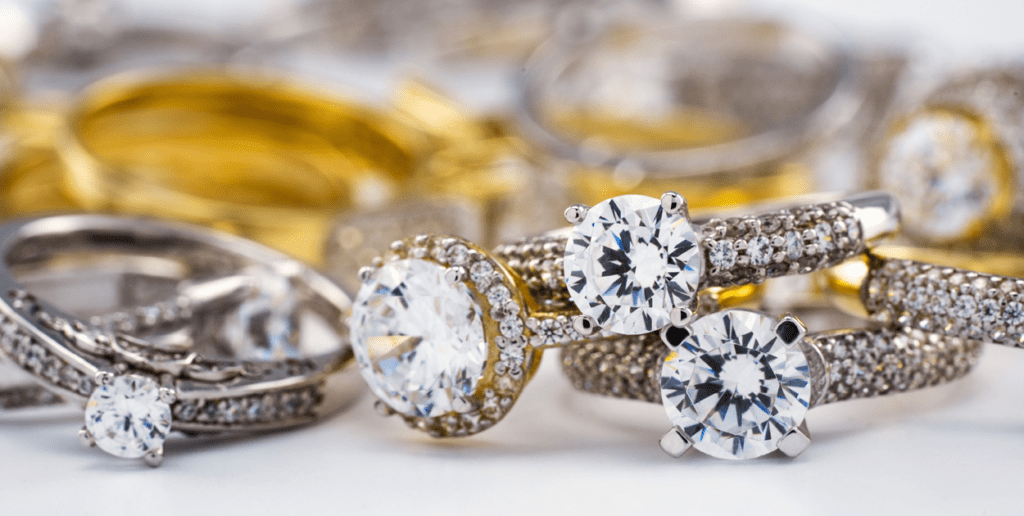When it comes to selling gold jewelry, whether rings or necklaces, understanding the factors that influence their value can help you make informed decisions to maximize your earnings. Both rings and necklaces can fetch a good price, but several factors determine which might bring in more money. Let’s explore the considerations for selling gold rings versus necklaces:
Factors Influencing Value:
-
 Gold Purity (Karat):
Gold Purity (Karat):
- The purity of gold is measured in karats (k). Pure gold is 24 karats, but jewelry is typically made from 14k, 18k, or even 10k gold in the United States. Higher karat gold (e.g., 18k or 24k) generally fetches a higher price per gram because it contains more gold and less alloy.
- Weight:
- The weight of the gold jewelry significantly affects its value. Heavier pieces, regardless of whether they are rings or necklaces, contain more gold and therefore can bring in more money.
- Market Demand:
- Current market demand for certain types of jewelry can influence prices. Fashion trends, cultural preferences, and seasonal demand can impact how much buyers are willing to pay for rings versus necklaces.
- Design and Craftsmanship:
- Intricate designs, craftsmanship quality, and additional features such as gemstones can increase the value of both rings and necklaces. Unique or designer pieces may fetch a premium price.
- Condition:
- The condition of the jewelry matters. Well-maintained pieces with minimal wear and tear are more appealing to buyers and can command a higher price.
Selling Rings:
 Pros:
Pros:
- Rings often contain smaller amounts of gold compared to necklaces, which can make them more affordable for buyers and thus easier to sell.
- Engagement rings or wedding bands may have sentimental value, making buyers willing to pay more.
- Rings can have higher perceived value due to their association with special occasions.
Cons:
- Some rings may contain intricate settings or gemstones that can complicate the selling process and reduce the value if not valued properly.
Selling Necklaces:
Pros:
- Necklaces often contain larger quantities of gold compared to rings, especially if they are longer or thicker chains.
- Simple gold chains or necklaces without gemstones are straightforward to evaluate and sell.
Cons:
- Necklaces may be more prone to wear and damage, which can affect their resale value.
- Heavy necklaces can be more expensive to buy initially, making them less appealing to some buyers.
Conclusion:
Ultimately, whether selling gold rings or necklaces will bring more money depends on several factors, including the jewelry’s karat purity, weight, market demand, design, and condition. Both rings and necklaces can be valuable assets if they are made from high-quality gold and are in demand. To maximize your earnings, consider obtaining multiple appraisals, exploring different selling platforms, and understanding the current gold market trends. By doing your research and choosing a reputable buyer, you can ensure you get the best possible price for your gold jewelry, whether it’s a ring, necklace, or any other form of gold jewelry you wish to sell.

 Gold Purity (Karat):
Gold Purity (Karat):